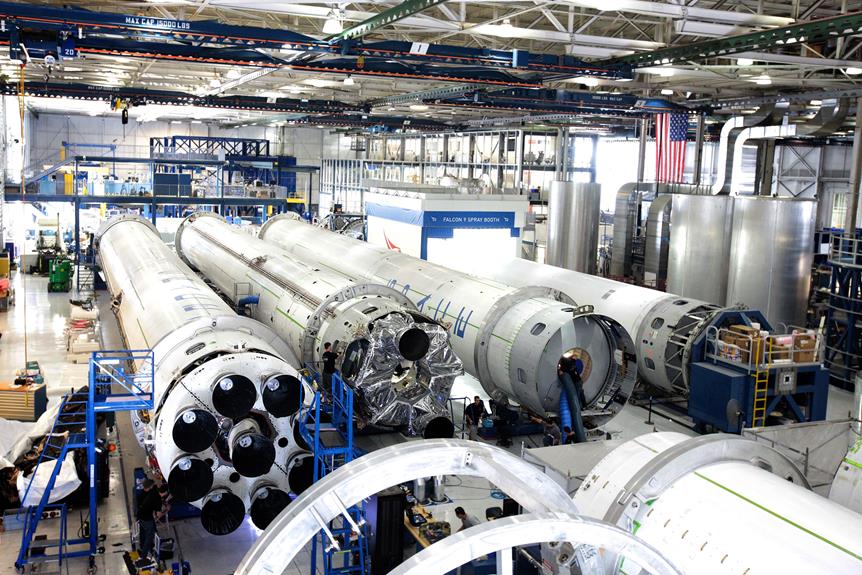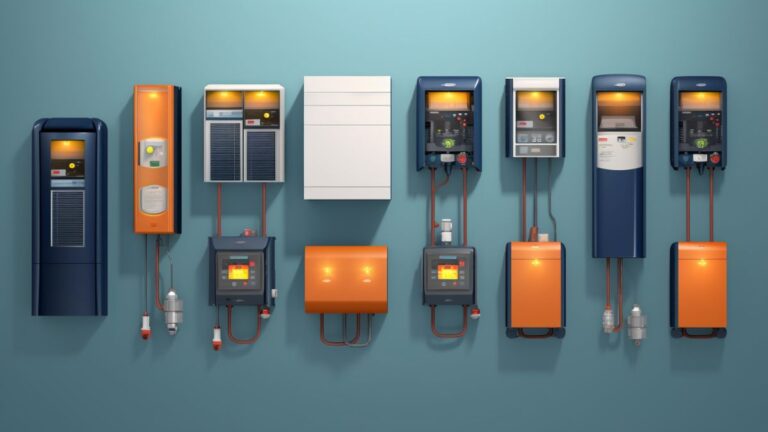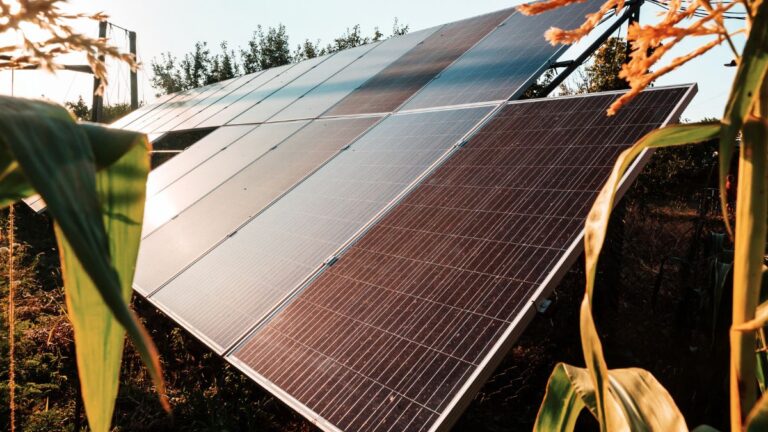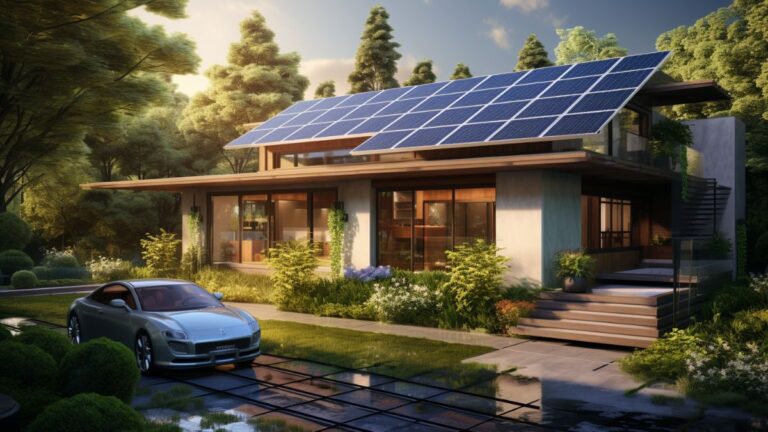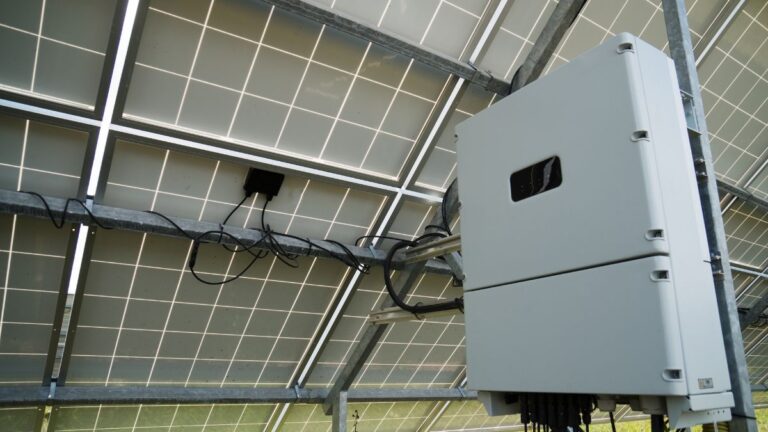Revolutionary Energy Storage: Unleashing the Power
Get ready to be blown away! We’re diving into the world of revolutionary energy storage and unleashing the power to transform our energy landscape.
From pumped hydroelectric to molten salt, batteries to compressed air, and even liquid air, these technologies are revolutionizing how we generate, store, and distribute electricity.
But, it’s not all smooth sailing. We’ll also explore the challenges and emerging technologies that are propelling us towards a greener and more sustainable future.
Let’s embark on this electrifying journey together!
Types of Energy Storage Technologies
In our exploration of energy storage technologies, let’s begin by examining the various types available today. From pumped hydroelectric to molten salt, batteries to compressed air, and even liquid air, the options are diverse. These emerging innovations hold great potential for future applications.
Pumped hydroelectric storage currently dominates the market, comprising 94% of US energy storage. Molten salt offers an efficient method of storing energy using concentrated solar power. Batteries, with an installed power capacity of 869 MW in the US by the end of 2018, are becoming increasingly popular for their versatility. Compressed air technology stores excess electricity underground, while liquid air technology stores air for energy by cooling it to a liquid state.
As we look ahead, it’s exciting to consider the future applications of these energy storage technologies. From powering electric vehicles to enabling renewable energy integration on a larger scale, these innovations have the potential to revolutionize our energy landscape. With ongoing research and development, we can expect even more advancements in the field of energy storage in the years to come.
Benefits of Energy Storage Development
As we continue exploring energy storage technologies, it’s important to highlight the significant benefits that come with the development of these innovative solutions. One crucial aspect is the role of government policies in promoting and incentivizing energy storage deployment. By providing financial support and creating regulatory frameworks that encourage investment in storage, governments can accelerate the transition to a cleaner and more resilient energy system.
Another key benefit of energy storage is its role in enhancing grid resilience. With the increasing penetration of intermittent renewable energy sources like solar and wind, the ability to store excess electricity becomes crucial in maintaining a stable and reliable grid. Energy storage systems can store surplus energy during times of low demand and release it when demand is high, effectively balancing the grid and reducing the need for costly backup power sources. This not only improves grid stability but also reduces the risk of blackouts and enhances overall system resilience.
Challenges in Deploying Energy Storage
To overcome the challenges in deploying energy storage, we need to work with industry leaders and policymakers to address the lack of research and development, commercialization, and utilization.
Here are four barriers and potential solutions to consider:
- High Costs: Energy storage technologies can be expensive, making it difficult for widespread adoption. The solution lies in investing in research and development to drive down costs and improve efficiency.
- Infrastructure Limitations: Existing power grids may not be equipped to handle the integration of energy storage systems. Upgrading and modernizing the infrastructure is crucial to ensure seamless integration.
- Regulatory Hurdles: Policies and regulations may not be fully supportive of energy storage deployment. Policymakers can play a vital role in creating favorable conditions by implementing incentives, streamlining permitting processes, and establishing clear standards.
- Public Awareness: Many people are still unaware of the benefits and potentials of energy storage. Education campaigns and outreach programs can help raise awareness and encourage public support.
Role of Energy Conservation in Revolutionizing Energy Storage
To address the challenges in deploying energy storage, we need to recognize the crucial role of energy conservation in revolutionizing the way we store power. Energy conservation strategies play a vital role in maximizing the efficiency of energy storage systems and minimizing waste. By reducing energy consumption, we can reduce the overall demand for storage and make the most of available resources.
Energy storage has a significant impact on the grid. It helps balance the supply and demand of electricity, ensuring a stable and reliable power supply. However, without energy conservation measures, the benefits of energy storage can be limited. By implementing energy-efficient practices, such as using energy-saving appliances and optimizing building insulation, we can reduce the overall energy demand and optimize the use of stored energy.
In conclusion, energy conservation strategies are essential for revolutionizing energy storage. By reducing energy consumption and optimizing the use of stored energy, we can maximize the efficiency and effectiveness of energy storage systems, ultimately leading to a more sustainable and resilient energy grid.
Importance of Energy Efficiency in Environmental Sustainability
Energy efficiency plays a vital role in achieving environmental sustainability by reducing energy consumption and optimizing resource utilization. Here are four reasons why energy efficiency measures are crucial for reducing environmental impact:
- Lowering energy consumption: By using energy more efficiently, we can reduce the overall demand for energy, which in turn reduces the need for fossil fuel-based power generation. This leads to a significant reduction in greenhouse gas emissions and air pollution.
- Preserving natural resources: Energy efficiency measures help us make the most of our finite resources by minimizing waste and maximizing the output from each unit of energy consumed. This reduces the need for extraction and processing of raw materials, protecting natural habitats and ecosystems.
- Mitigating climate change: By reducing energy consumption, we can decrease the amount of carbon dioxide and other greenhouse gases released into the atmosphere. This helps in combating climate change and its associated impacts, such as rising temperatures, extreme weather events, and sea-level rise.
- Cost savings: Energy efficiency measures not only benefit the environment but also our wallets. By using energy more efficiently, we can lower our energy bills and save money in the long run.
Addressing Major Environmental Issues Through Sustainable Living
We can make a significant impact on major environmental issues by embracing sustainable living practices.
Water conservation and reducing carbon emissions are crucial aspects of sustainable living that can help address these issues.
Conserving water is essential as water shortages and pollution continue to be major environmental concerns. By implementing measures like using efficient irrigation systems, fixing leaks, and reducing water usage, we can contribute to the preservation of this vital resource.
Similarly, reducing carbon emissions is crucial for mitigating climate change. This can be achieved through actions such as using renewable energy sources, practicing energy efficiency, and promoting sustainable transportation options.
Recap
As we wrap up our exploration of addressing major environmental issues through sustainable living, it’s crucial to recognize the immense potential and power of revolutionary energy storage. Energy storage advancements have the ability to shape the future of renewable energy in profound ways. Here are four key reasons why:
- Grid Stability: Energy storage provides a reliable solution to balance the intermittent nature of renewable energy sources, ensuring a stable and resilient power grid.
- Peak Demand Management: By storing excess energy during low-demand periods and releasing it during peak hours, energy storage helps avoid blackouts and reduces the need for costly infrastructure upgrades.
- Decentralized Power Generation: Energy storage enables individuals and communities to generate and store their own electricity, promoting energy independence and reducing reliance on centralized power systems.
- Carbon Emission Reduction: With the ability to store surplus renewable energy, energy storage allows for a greater integration of clean energy sources, leading to a significant reduction in greenhouse gas emissions.
In conclusion, the future of renewable energy relies heavily on the development and deployment of advanced energy storage technologies. These advancements not only address major environmental issues but also pave the way for a more sustainable and resilient energy landscape.
Conclusion
The incredible advancements in energy storage technology have ignited a spark of hope for a greener and more sustainable future.
By harnessing the power of renewable energy sources and overcoming the challenges of deployment, we’re on the cusp of a revolution in our energy landscape.
With each step forward, we’re unlocking the potential to create a world where clean and efficient energy is the norm.
Together, let’s embrace this revolutionary energy storage and unleash its power for generations to come.
